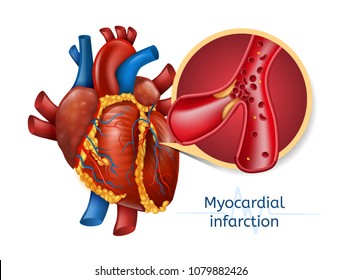A 52-year-old male suffered a myocardial infarction secondary to atherosclerosis and ischemia. Once oxygen returned to the damaged heart, reperfusion injury occurred as a result of:
Oxygenation of the cells
Free radical formation
Increased metabolic state
Lactic acid build-up
The Correct Answer is B
Choice A Reason:
Oxygenation of the cells is a necessary process during reperfusion, but it is not the direct cause of reperfusion injury. The injury occurs due to the sudden influx of oxygen, which leads to the formation of reactive oxygen species (ROS) or free radicals. These free radicals cause oxidative stress and damage to the myocardial cells.
Choice B Reason:
Free radical formation is the primary mechanism behind reperfusion injury. When blood flow is restored to the ischemic myocardium, the sudden reintroduction of oxygen leads to the production of free radicals. These free radicals cause significant oxidative damage to the cell membranes, proteins, and DNA, exacerbating the injury to the heart tissue.
Choice C Reason:
An increased metabolic state can occur during reperfusion as the cells attempt to recover from ischemia. However, it is not the direct cause of reperfusion injury. The primary issue is the oxidative stress caused by free radicals, not the metabolic changes themselves.
Choice D Reason:
Lactic acid build-up is a consequence of anaerobic metabolism during the ischemic period, not a cause of reperfusion injury. During ischemia, cells switch to anaerobic metabolism, leading to lactic acid accumulation. However, once oxygen is reintroduced, the focus shifts to the oxidative damage caused by free radicals rather than lactic acid.

Nursing Test Bank
Naxlex Comprehensive Predictor Exams
Related Questions
Correct Answer is A
Explanation
Choice A Reason:
Clinical trials to assess the teratogenic effects of medications during pregnancy are ethically challenging because they would involve exposing pregnant women and their fetuses to potential risks. The primary concern is the safety of the fetus, as many drugs can cross the placenta and potentially cause harm. Therefore, most of the data on teratogenic effects come from observational studies, case reports, and animal studies rather than controlled clinical trials.
Choice B Reason:
While the FDA has initiatives to improve the safety of medications during pregnancy, it is not accurate to say that a new study will allow testing of medications during pregnancy in the future. The ethical concerns surrounding the exposure of pregnant women to potential teratogens remain a significant barrier. Current efforts focus on improving post-marketing surveillance and encouraging the reporting of adverse effects to gather more data.
Choice C Reason:
Although some women may be reluctant to admit taking medications during pregnancy, this is not the primary reason for the lack of data on teratogenic effects. The main issue is the ethical and practical challenges of conducting clinical trials in pregnant women. Reluctance to report medication use can contribute to underreporting, but it is not the central factor.
Choice D Reason:
Recommending that pregnant women avoid medications is a general precaution, but it does not address the reason why more is not known about teratogenic effects. The avoidance of medications is advised to minimize potential risks, but the lack of data is primarily due to the ethical constraints of conducting clinical trials in this population.
Correct Answer is B
Explanation
Choice A: Beta 2 Agonist Decreases Blood Pressure
Beta 2 agonists primarily cause bronchodilation and vasodilation, which can lead to a decrease in blood pressure. However, this is not their primary function, and they are more commonly associated with the relaxation of smooth muscles in the airways.
Choice B: Beta 1 Agonist Increases Blood Pressure
Beta 1 receptors are primarily located in the heart. Activation of these receptors increases heart rate and contractility, which in turn increases cardiac output and blood pressure. Therefore, beta 1 agonists are known to increase blood pressure.
Choice C: Beta 2 Agonist Reduces Blood Pressure
Similar to choice A, beta 2 agonists can cause vasodilation, which may reduce blood pressure. However, this is not their primary therapeutic use, and they are mainly used for their bronchodilatory effects.
Choice D: Beta 1 Agonist Reduces Blood Pressure
Beta 1 agonists increase heart rate and contractility, leading to an increase in blood pressure. Therefore, this statement is incorrect as beta 1 agonists do not reduce blood pressure.
Whether you are a student looking to ace your exams or a practicing nurse seeking to enhance your expertise , our nursing education contents will empower you with the confidence and competence to make a difference in the lives of patients and become a respected leader in the healthcare field.
Visit Naxlex, invest in your future and unlock endless possibilities with our unparalleled nursing education contents today
Report Wrong Answer on the Current Question
Do you disagree with the answer? If yes, what is your expected answer? Explain.
Kindly be descriptive with the issue you are facing.
